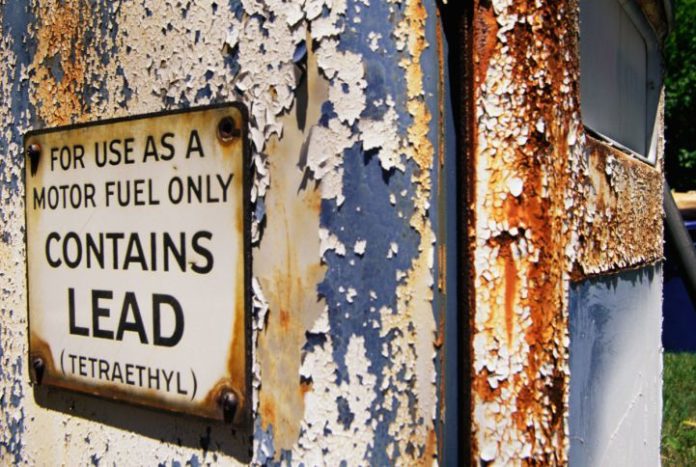Australians who were exposed to high levels of lead as children may be at greater risk of committing violent and impulsive crimes two decades later, our yet-to-be-published research suggests.
The origins of criminal behaviour have previously been attributed to a perpetrator’s genetic make up or how they were raised. But we’re increasingly realising that the child’s physical and chemical environment plays a significant role in criminal behaviours later in life.
How are young people exposed to lead?
Lead exposure from soils and dusts in Australian communities is dominated by three sources: mining and smelting emissions, leaded paint, and leaded petrol.
In mining or smelting cities such as Broken Hill (NSW), Boolaroo (Lake Macquarie, NSW), Port Kembla (NSW), Port Pirie (South Australia) and Mount Isa (Queensland), lead contamination can come from smelter fallout or dust from spoil heaps, tailings and ore processing that is dispersed across the environment.
Leaded petrol formed a significant source of lead exposure in cities when it was sold in Australia from 1932 until 2002. In the two national assessments of petrol lead emissions in Australian capital cities, 3,842 tonnes of lead were emitted in 1976 and 2,388 tonnes of lead were released in 1985, despite reductions in the allowable lead concentration in petrol.
Blood lead levels have fallen since the final removal of lead from petrol in 2002 as well as with the reduction of allowable lead in paint to 0.1% in 1997.
But the legacy from earlier emissions remains, with an estimated 100,000 Australian children having blood lead levels high enough to cause health problems.
Health harms from lead
Lead is a neurotoxin, which means that when it is absorbed, inhaled or ingested, it can affect the development of the child’s nervous system.
High blood lead levels have been linked with decreased IQ and academic achievement, and other learning difficulties. Children who were exposed to lead in Massachusetts in the 1990s, for instance, were likely to perform more poorly than their peers on standardised tests, even after controlling for community and school characteristics.
Similarly, the UK Avon Longitudinal Study found higher childhood blood lead levels were associated with decrements in reading, writing and spelling grades on standard assessment tests.
Most recently, a 2012 study of multiple metal exposures in New Orleans showed that elevated soil metals (including lead) reduced and compressed student elementary school scores.
Lead exposure and behavioural problems
Elevated blood lead levels are also risk factors for a range of social and behavioural problems, such as attention-deficit hyperactivity disorder (ADHD), oppositional/conduct disorders, and delinquency.
Specifically, the US National Toxicological Report on the Health Effects of Low-level Lead concluded that children with blood lead levels of up to 5μg/dL (micrograms per decilitre) were more likely to have attention-related and antisocial behavioural problems.
A 2002 study which compared 194 delinquent children with 146 controls found that delinquents were four times more likely to have been lead poisoned (with a blood lead level greater than 10 μg/dL) than the control group. These patterns remained even after controlling for a range of factors relevant to their socioeconomic status.
In 2008, US researchers showed that children with elevated blood lead concentrations at six years of age had a 50% greater risk of being arrested for violent crime as a young adult. Arrest rates involving violent crimes were shown to increase for each 5 μg/dL increment increase in blood lead.
Controlled studies of lead-exposed rodents confirm that low doses of lead result in enhanced aggressive behaviour as the animals mature, confirming that early life environmental lead exposure in humans may contribute to adulthood criminal activities.
Lead exposure and crime in Australia
Using data from the NSW Bureau of Crime Statistics and Research and the NSW Environment Protection Authority (EPA), we examined the correlations between lead-in-air emissions and crime rates with 20- and 21-year time lags at seven sites in NSW.
All seven sites showed that higher levels of airborne lead resulted in higher assault rates 20 to 21 years later. Areas with higher lead levels tended to show stronger relationships.
Source: MacQuarie Univeristy










